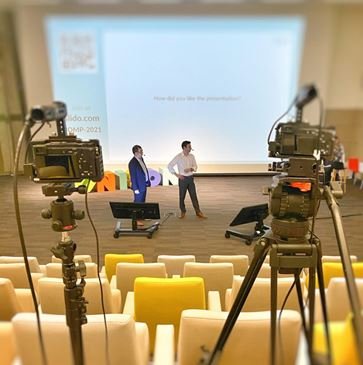Multimedia is transforming the way we interact with digital content. From websites to apps, multimedia plays a crucial role in enhancing user experience. This article explores how multimedia enhances user experience and the benefits it brings to various platforms.

Engaging Visuals
Captivating Design Elements
One of the primary ways multimedia enhances user experience is through engaging visuals. High-quality images, videos, and animations capture attention and make content more appealing. For example, a well-designed infographic can convey complex information quickly and effectively.
Dynamic Interactions
Multimedia elements like interactive graphics and animations create dynamic interactions. Users can engage with content in real-time, such as by clicking on interactive maps or participating in quizzes. These features make the experience more immersive and enjoyable.
Enhanced Information Delivery
Visualizing Complex Data
Multimedia enhances user experience by helping users understand complex data. Charts, graphs, and video explanations can simplify intricate concepts. This visualization aids in better comprehension and retention of information.
Audio and Video Integration
Incorporating audio and video into content can provide additional context and detail. Tutorials, product demonstrations, and interviews add depth to the information presented. This multimedia approach makes content more engaging and informative.
Improved User Engagement
Interactive Features
Multimedia elements, such as clickable buttons and interactive forms, encourage user interaction. These features make navigating a website or app more intuitive and enjoyable. By involving users actively, multimedia enhances their overall engagement with the content.
Gamification Elements
Gamification, which integrates game-like elements into non-game contexts, can enhance user experience. Features like points, badges, and leaderboards make interactions more fun and rewarding. This approach can boost user motivation and satisfaction.
Accessibility and Inclusivity
Supporting Diverse Needs
Multimedia can make content more accessible to a wider audience. For instance, captions and transcripts for videos support users with hearing impairments. Additionally, visual elements can assist users with different learning styles, making content more inclusive.
Adaptive Content
Multimedia also supports adaptive content that adjusts to user preferences. For example, interactive content can be tailored based on user choices, ensuring a personalized experience. This adaptability enhances user satisfaction and engagement.
Enhancing Brand Identity
Building Stronger Connections
Multimedia helps build a stronger brand identity by creating memorable experiences. Custom animations, branded videos, and unique design elements can reinforce brand messages and values. This cohesive branding approach helps users connect more deeply with the brand.
Consistent Visual Themes
Maintaining consistent visual themes across multimedia elements strengthens brand recognition. Using uniform colors, fonts, and design styles ensures a cohesive look and feel. This consistency enhances the overall user experience and brand perception.
Analyzing User Interaction
Gathering Valuable Insights
Multimedia tools also allow for the collection of valuable user interaction data. Analytics from interactive elements and multimedia content can provide insights into user behavior and preferences. This data helps in refining content and improving user experience.
Optimizing Performance
By analyzing how users interact with multimedia content, businesses can identify areas for improvement. Adjustments based on user feedback and behavior can enhance performance and effectiveness. This optimization process ensures that multimedia continues to enhance the user experience.
Conclusion
In conclusion, multimedia significantly enhances user experience by engaging users, improving information delivery, and supporting accessibility. By integrating dynamic visuals, interactive elements, and adaptive content, businesses can create more immersive and satisfying experiences. Embracing multimedia is essential for anyone looking to enhance user interaction and satisfaction in today’s digital world.











